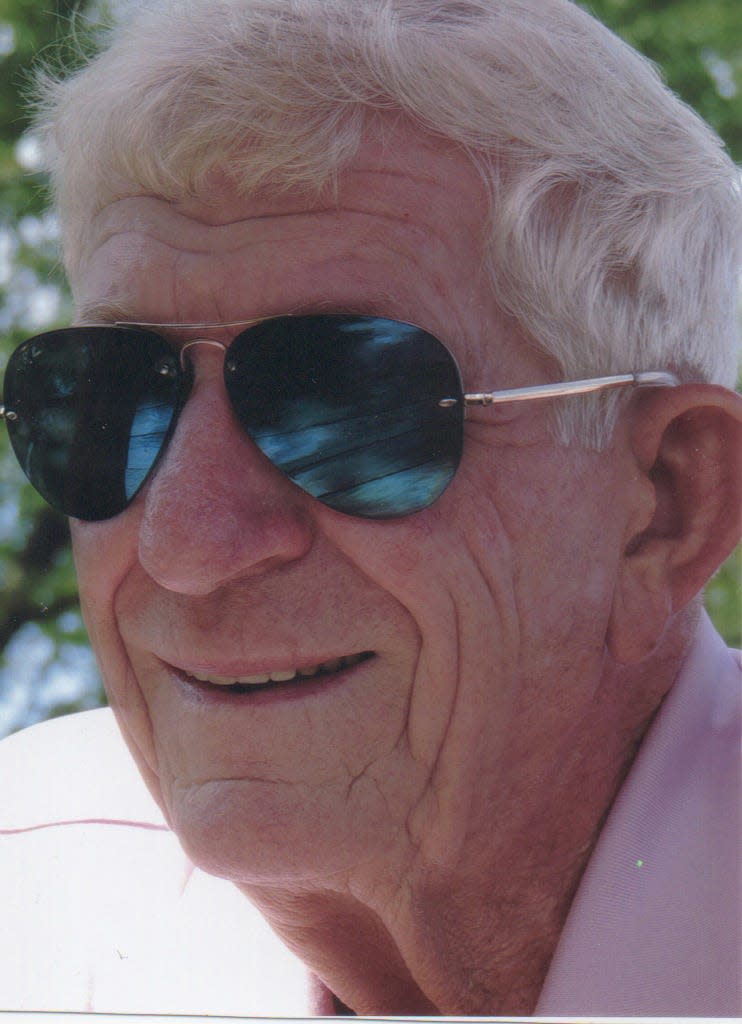JOHN F. FLOYD COMMENTARY: A first-hand, breathtaking look at America's naval might

I recently went to see the movie “Top Gun: Maverick.” It brought back a lot of wonderful memories of my visits to aircraft carriers USS Carl Vinson, CVN 70, and USS John Stennis, CVN 74, both fine examples of America’s military might.
While the scenes of the movie were dramatic, there is nothing like experiencing the real thing.
Of all the extremely powerful events in my life, the opportunity to witness first-hand the operation of the mightiest force for freedom that exists in the world today, the aircraft carrier experience ranks at the apex of those events.
It all started at the invitation of the U.S. Navy. I was informed, after getting the appropriate clearance, to report to Naval Air Station North Island, which is at the north end of the Coronado peninsula on San Diego Bay in California.
The NAS North Island is part of the largest aerospace-industrial complex in the Navy. North Island is the homeport to two aircraft carriers, the USS Abraham Lincoln and the USS Theodore Roosevelt. In addition, the North Island airfield has more than 230 aircraft on station.
North Island’s airfield was the departure point for our journey to the USS Carl Vinson, operating about 150 miles off the coast of California. I say our journey, because I had invited Dr. Paul Kindling, a heart surgeon from Topeka, Kansas, to accompany me on this spectacular opportunity. I figured I might need his services considering what was ahead of us (just joking). I knew we were in the able hands of professional naval aviators and crewmen of the USS Carl Vinson.
As we were getting ready for our departure, the admiral told us our pilots would be in shortly to brief us on what to expect on our flight to the USS Carl Vinson. I was adjusting the cranial they supplied to us and was totally immersed in the piece of equipment, when I heard this female voice. I looked up and saw the officer who was the designated pilot for our aircraft. The officer allayed all our anxieties about a carrier landing.
We then were escorted to our mode of transportation to the carrier, a Grumman C-2 twin-engine, high-wing cargo aircraft, designed to carry men, machinery and mail, affectionally called 3M. It has a range of 1,500 miles, a top speed of 350 mph and had been in use by the Navy since 1964.
The flight to the carrier was uneventful until I caught sight of the USS Carl Vinson. It appeared as a small postage stamp on a sea of green. My first thought was, “We are landing on that?” Because the carrier was in a cat-shot and retrieval mode, we had to get in a queue to land, so several times I got a good look at that postage stamp.
The Navy’s retrieval process is a controlled crash landing. It is basically the same technology the Navy has used for years to trap aircraft landing on a carrier. The retrieval apparatus on the jet is called a tailhook, which catches one of four wires that cross the flight deck and stops the aircraft. I am officially a “Tailhooker” and very proud of it.
The deck of an aircraft carrier is a dangerous place during flight operations. The carrier is launching while retrieving aircraft; consequently, the noise is incredible from jets landing under full power and being launched at after-burner speed.
The incredible aspect of the whole operation is this: The flight deck is being controlled by young men and women. The captain of the ship told me, “These are young men and women who you would not have trusted with your car keys six months ago.”
We got to witness air operations until 4 p.m. About 7 p.m., they started night operations. The night catapult shots were unbelievable, but the night retrievals were even more dramatic. The flight deck was washed in low-level light. Aircraft after aircraft were launched and retrieved routinely on the deck of a ship that was moving at about 32 mph.
We spent the night on the carrier and departed with a catapult shot in the afternoon of the next day. The cat shot was more dramatic than the retrieval process. If I remember correctly, you go from 0 to 160 mph in 3 seconds. Breathtaking.
I wish every American could witness the professionalism and courage of the men and women of the U.S. Navy.
I haven’t touched on the USS John Stennis, so more to come.
John F. Floyd is a Gadsden native who graduated from Gadsden High School in 1954. He formerly was director of United Kingdom manufacturing, Goodyear Tire & Rubber Co., vice president of manufacturing and international operations, General Tire & Rubber Co., and director of manufacturing, Chrysler Corp. He can be reached at johnfloyd538@gmail.com. The opinions reflected are his own.
This article originally appeared on The Gadsden Times: John Floyd recalls landing on, takeoff from Naval carrier

